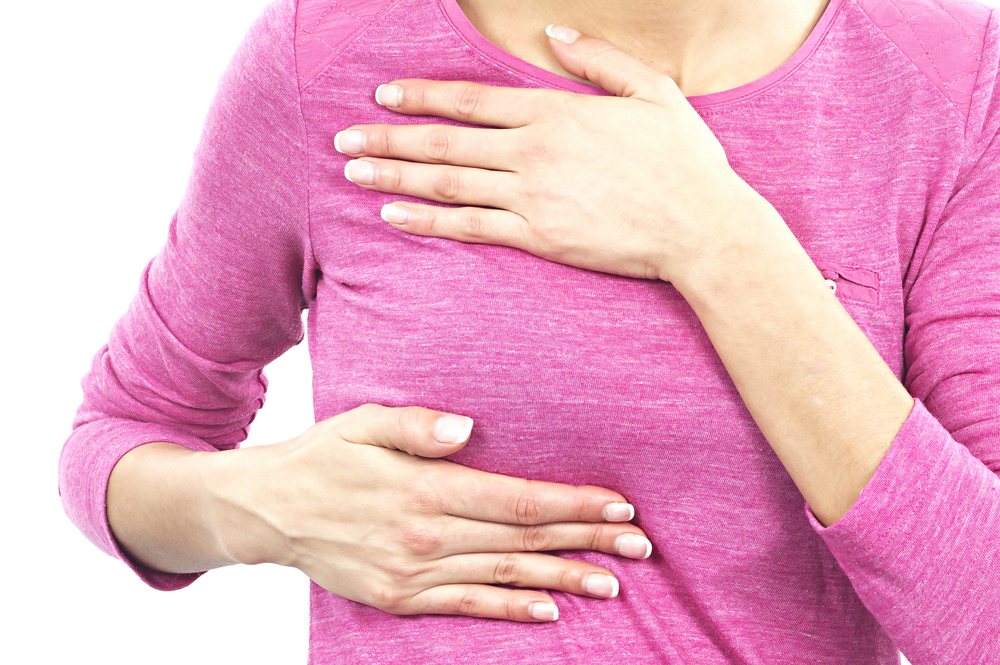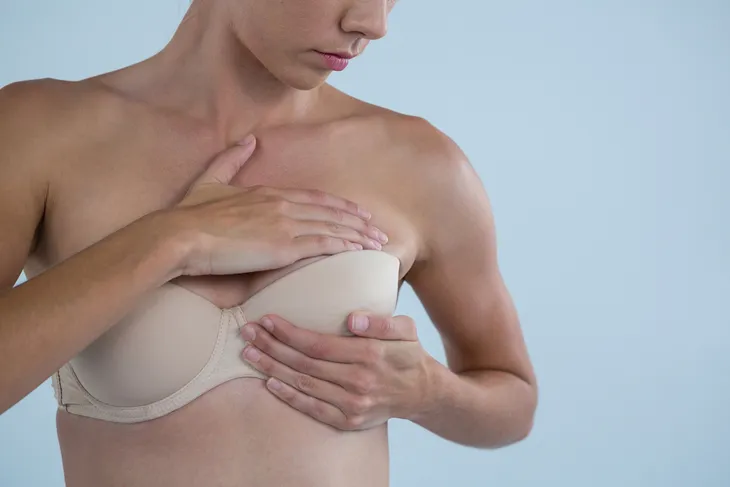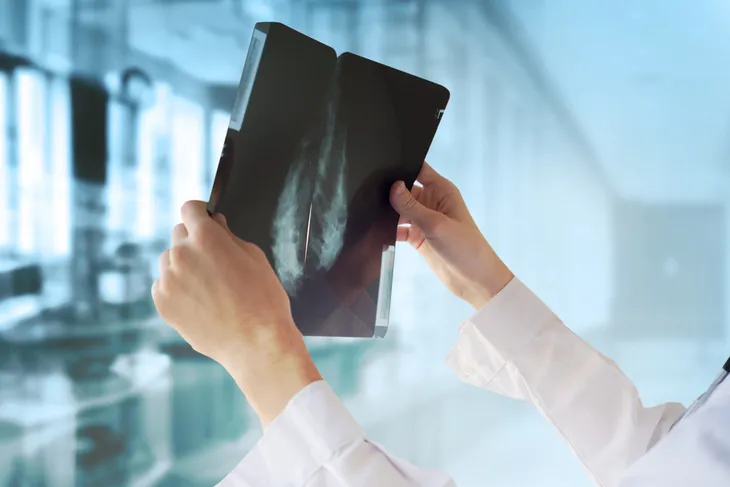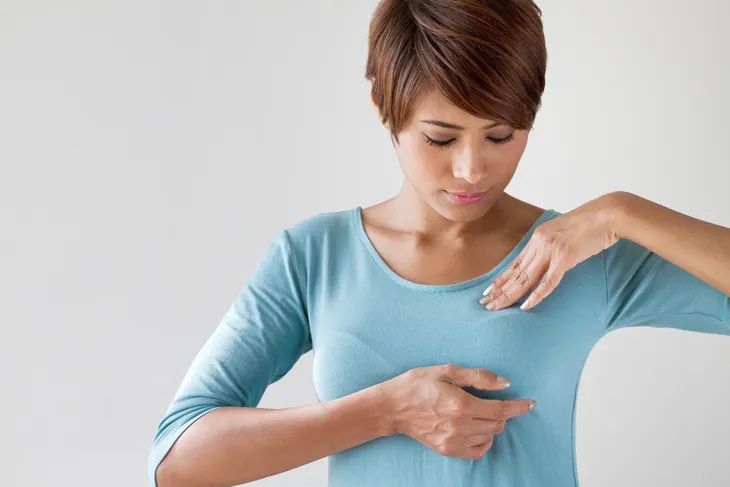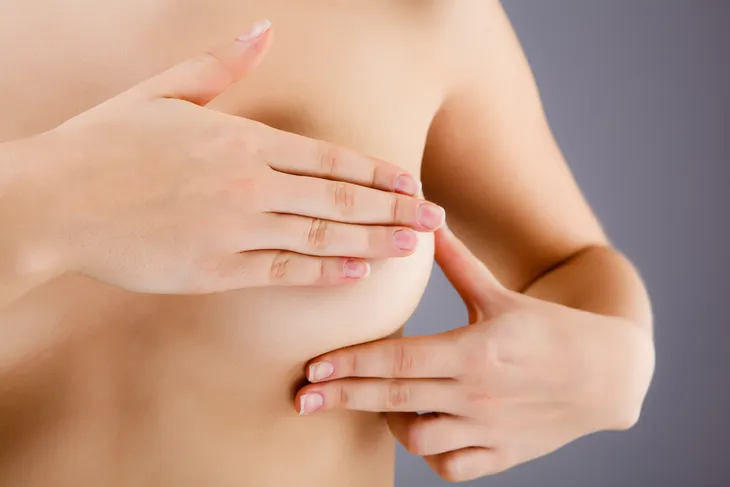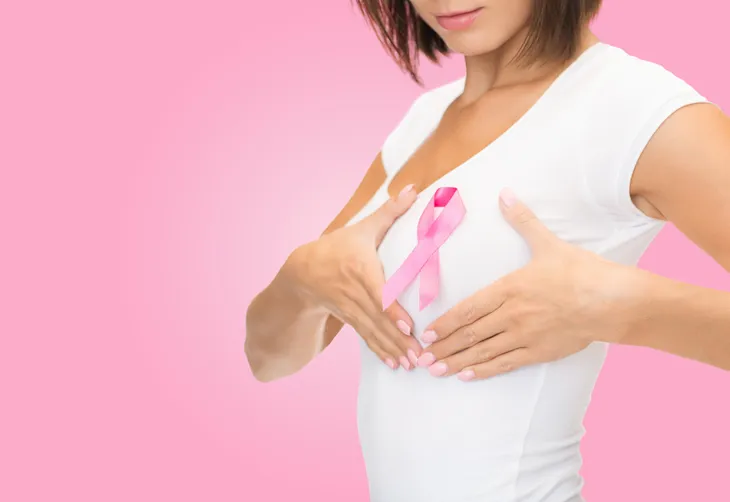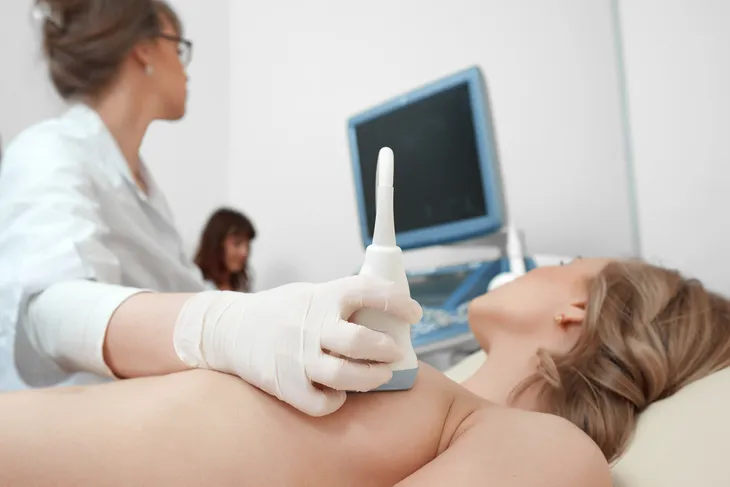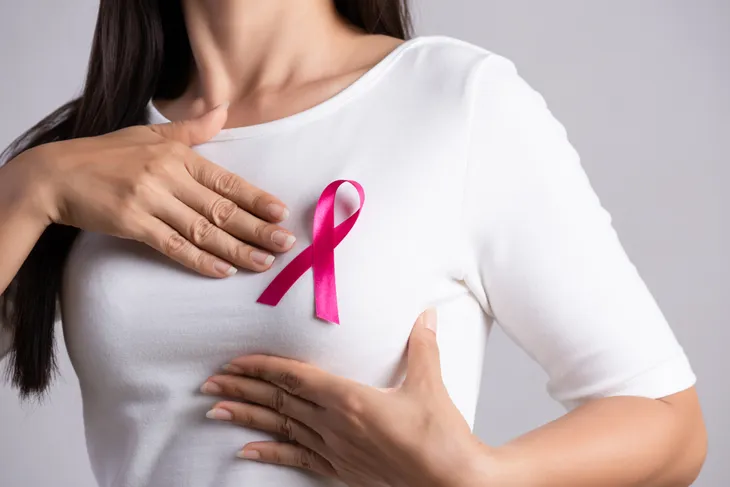Breast cancer is the most commonly diagnosed cancer among women in the United States—with one in every 8 women developing this cancer. Breast cancer typically develops as a small tumor (or lump) in the tissues throughout the breasts and then, if cancerous, spreads through the lymph nodes.
The best hope of surviving a breast cancer diagnosis is via early detection. That’s why routine self-exams of the breasts to identify any lumps, as well as annual check-ups and mammograms with your health care professional are important.
Here are 10 early warning signs to look out for during your self-breast exams at home…
Detection of a Lump
When performing a self breast exam, carefully apply pressures to the breasts and surrounding tissues with your fingers. Both benign (non cancerous) and malignant (cancerous) breast lumps sometimes form under the armpit, in the collarbone, near the site of the lymph nodes, and around the nipples, as rigid, hard, tender lumps that don’t move when you press against them. Any tenderness may be due to swollen tissues. If you detect a lump, call your doctor immediately.
Itchy Breasts
A common symptom of inflammatory breast cancer, a rashless itch in and around your breasts can indicate an underlying issue more severe than dermatitis. The itchy sensation is often accompanied by nipple discharge and breast tissue that appears thicker or changed in texture called peu de orange or like the texture of an orange peel. So don’t settle for a prescription ointment, ask your doctor to screen you for breast cancer right away.
Swollen Breasts
Inflammation of the breast tissues and areas around the breasts can occur if there is a breast tumor pressing on the tissues above. Typically a sign of inflammatory breast cancer swelling can be accompanied by red, patchy, hot skin that feels extremely tender to the touch or caress.
Shoulder and Neck Stiffness
Sore shoulders and stiff necks aren’t always what they seem. If left untreated, breast cancer will spread, usually later stages, to the spine, back, or shoulders and cause achy pain in these areas. If back, neck, and shoulder pain persist, regardless of ointment, rest, stretching, or massage, contact your doctor to talk about a breast cancer screening.
Breast Size Change
Oftentimes, your spouse or partner will detect a problem with changes in breast size before you do. But it’s common for a breast tumor to alter the shape or size of an affected breast before you feel that tell tale lump. So along with self exams for breast lumps, be sure to visually check the shape and size of your breasts in a mirror and take heed when you put on your bra.
Breast Tenderness
Breast tumors will range in pain—that’s if they cause any discomfort at all. It’s more common for a lump to develop in a small, seed-like structure along the breast tissue, which may cause the breasts to be tender when you’re lying down, being caressed by your partner, or feeling friction from your bra.
Nipple Discharge
Breast cancer is prone to developing in your milk ducts (around the nipple), which can show itself in a milky, watery, or blood-tinged discharge that leaves behind a scaly crust on the nipple. If you are not breastfeeding, any discharge from the nipples is not normal. Bring them to the attention of your doctor immediately.
Nipple Sensitivity
Another breast cancer symptom that is often noticed by your partner before you—abnormally sensitive nipples that suddenly become void of sensitivity are often caused by breast tumors that develop underneath the tissue of the nipple.
Nipple Changes
An underlying breast tumor (i.e., a tumor that develops underneath the nipple) can also cause your nipples to change in a visual manner as well. Your partner may notice your nipple has become inverted, flat, indented, or asymmetrical in shape. Yout nipples may also change in size for no reason (i.e., you’re not breastfeeding).
Dimpled Breast Tissue
Thickening that feels different from the surrounding tissue can occur in the earliest stages of breast cancer development. For instance, the skin over the breasts may become red or dimpled, or even appear pitted—similar to the skin that covers an orange.
